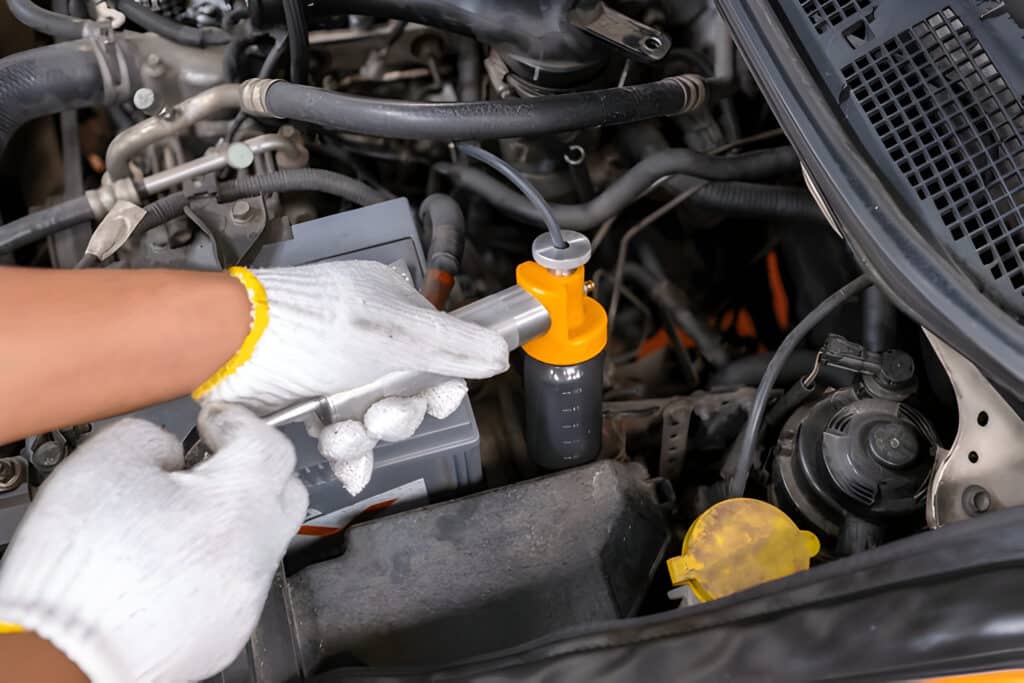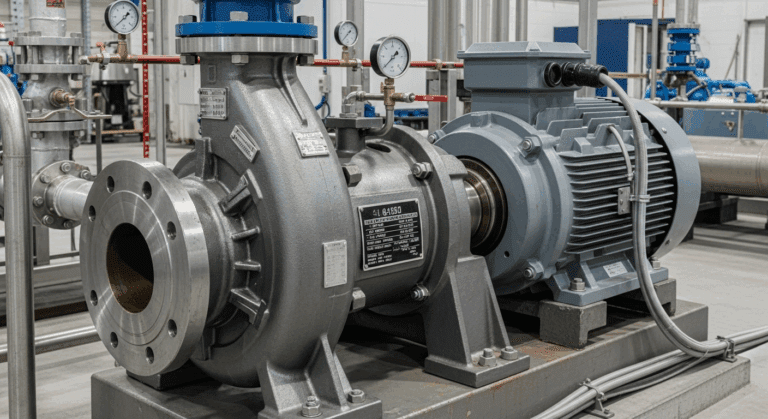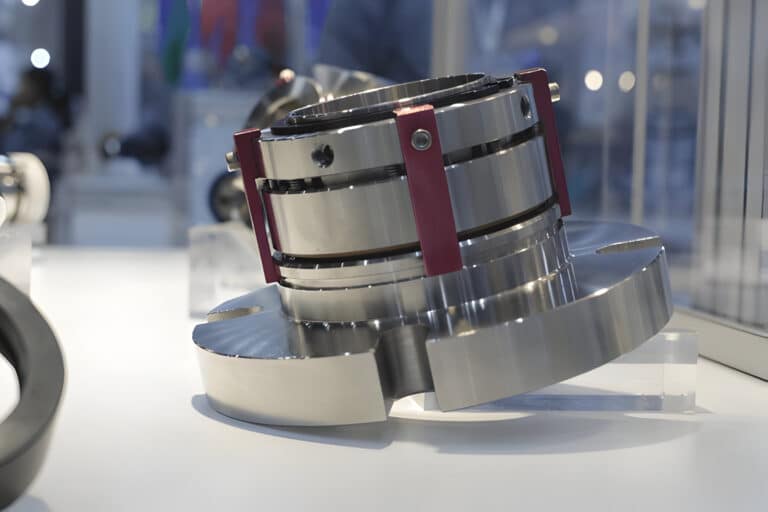Oil analysis is a powerful predictive maintenance tool that involves examining lubricating oils to assess the condition of equipment and detect potential issues before they lead to failures. By regularly analyzing oil samples, maintenance teams can optimize maintenance schedules, reduce costs, and improve overall equipment reliability.

How Is Oil Analysis Conducted
Oil analysis involves a series of tests and inspections to evaluate the condition of lubricating oils and the equipment they protect. The following methods are commonly used in oil analysis programs:
Condition-Based Monitoring
Condition-based monitoring involves regularly assessing the condition of lubricants and equipment to detect changes that may indicate developing issues. This approach allows maintenance teams to take corrective action before failures occur, reducing unplanned downtime and extending equipment life.
Visual Inspection for Contamination and Viscosity
Visual inspection is a simple but effective method for detecting gross contamination, such as water or debris, and assessing the general condition of the oil. Changes in color, clarity, or viscosity can indicate issues like oxidation, thermal degradation, or incorrect lubricant use.
Fluid Property Inspection for Contamination and Viscosity
Fluid property tests measure key characteristics of the oil, such as viscosity, acidity, and additive levels. These tests can reveal contamination, degradation, or depletion of essential additives, helping maintenance teams determine when oil changes or other corrective actions are necessary.
Wear Analysis
Wear analysis involves examining oil samples for the presence of wear particles, which can indicate abnormal wear or damage to machine components. By identifying the type, size, and concentration of wear particles, maintenance professionals can pinpoint the source of the issue and take appropriate action.
Continuously Monitoring Trends
Trend analysis is a critical aspect of oil analysis, as it allows maintenance teams to track changes in oil and equipment condition over time. By comparing current results to baseline data and monitoring trends, teams can identify developing issues early and make data-driven decisions about maintenance and reliability improvements.
Benefits of Oil Analysis for Predictive Maintenance
- Early Detection and Prevention of Equipment Failures: Oil analysis enables the early detection of potential issues, such as abnormal wear, contamination, or degradation, allowing maintenance teams to take corrective action before failures occur. This proactive approach helps prevent catastrophic failures and unplanned downtime.
- Optimizing Maintenance Intervals Based on Actual Condition: By assessing the true condition of lubricants and equipment, oil analysis allows maintenance teams to optimize maintenance schedules based on actual needs rather than arbitrary time intervals. This condition-based approach can help extend maintenance intervals, reducing costs and minimizing unnecessary interventions.
- Extending Oil and Equipment Life: Regular oil analysis helps identify when lubricants need to be changed or reconditioned, ensuring that equipment is always operating with optimal lubricant quality. By maintaining proper lubrication and addressing issues promptly, organizations can extend the life of both lubricants and equipment, maximizing their return on investment.
- Reducing Maintenance Costs and Unplanned Downtime: Oil analysis can significantly reduce maintenance costs by preventing failures, optimizing maintenance schedules, and extending equipment life. By minimizing unplanned downtime and avoiding costly repairs or replacements, organizations can improve their bottom line and maintain a competitive edge.
- Improving Safety and Environmental Compliance: Properly maintained equipment is safer to operate and less likely to experience failures that could harm personnel or the environment. Oil analysis can also help organizations comply with environmental regulations by identifying leaks, reducing waste, and ensuring proper disposal of used lubricants.
How Oil Analysis Works
Oil analysis involves collecting a representative sample of lubricating oil from a machine or system and subjecting it to a series of tests to assess its condition and the health of the equipment it protects. The process typically involves the following steps:
- Sampling: A small amount of oil is collected from the machine using a clean, sterile container and following proper sampling techniques to ensure the sample is representative of the oil in the system.
- Testing: The oil sample is sent to a laboratory or analyzed on-site using specialized equipment. A variety of tests are performed to measure key properties and detect the presence of contaminants, wear particles, or other abnormalities.
- Analysis: The test results are analyzed by trained professionals who compare the data to established baselines, trends, and industry standards. They look for any deviations or anomalies that may indicate issues with the oil or the equipment.
- Interpretation: Based on the analysis, the oil analysis expert generates a report that interprets the results and provides recommendations for maintenance actions, such as oil changes, filtration, or equipment repairs.
- Action: The maintenance team reviews the report and implements the recommended actions to address any issues and optimize the performance and reliability of the equipment.
Key Oil Analysis Tests and Parameters
- Viscosity: Viscosity is a measure of an oil’s resistance to flow and is a critical property for proper lubrication. Changes in viscosity can indicate contamination, degradation, or the wrong oil being used.
- Elemental Analysis: This test measures the levels of various elements in the oil, including wear metals (such as iron, copper, and lead), contaminants (such as silicon and sodium), and additives (such as phosphorus and zinc). Elemental analysis can provide insights into the type and severity of wear, contamination, and additive depletion.
- Particle Count: Particle count tests measure the number and size of particles in the oil, which can indicate contamination or abnormal wear. High particle counts can cause accelerated wear, reduced oil life, and decreased equipment reliability.
- Moisture Content: The presence of water in oil can cause corrosion, accelerated wear, and decreased lubrication effectiveness. Moisture content tests determine the amount of water present in the oil, helping identify the source of the contamination and guiding corrective actions.
- Acid Number: The acid number is a measure of the acidity of the oil, which can increase as the oil oxidizes and degrades. High acid numbers can indicate oxidation, contamination, or the need for an oil change.
- Spectroscopy: Spectroscopic methods, such as infrared spectroscopy and ferrography, analyze the molecular composition of the oil and the type and size of wear particles present. These tests can provide detailed information about the oil’s condition and the specific wear mechanisms occurring in the equipment.
- Neutralization Numbers: The base number and the acid number are used to measure the oil’s ability to neutralize acidic compounds that can form during operation. A decrease in the base number or an increase in the acid number can indicate the need for an oil change.
- Oxidation Levels: Oxidation is a primary cause of oil degradation, leading to increased acidity, viscosity changes, and the formation of sludge and varnish. Oxidation tests measure the extent of oil degradation and help determine when an oil change is necessary.
- Flash Point: The flash point is the lowest temperature at which an oil’s vapors will ignite in the presence of an ignition source. A decrease in the flash point can indicate fuel dilution or other contamination.
- Demulsibility: Demulsibility is the ability of an oil to separate from water. Poor demulsibility can lead to the formation of stable emulsions, which can cause corrosion, decreased lubrication effectiveness, and increased oil degradation.
- Analytical Ferrography: Analytical ferrography is a specialized test that examines the size, shape, and composition of wear particles in the oil. This test can provide detailed information about the type and severity of wear occurring in the equipment, helping to identify specific components that may be failing.
When to Use Oil Analysis
- When establishing a baseline for new equipment or lubricants
- When assessing the condition of used equipment prior to purchase or rebuild
- When equipment is operating in harsh or demanding environments
- When extending oil drain intervals to optimize lubrication practices
- Before and after major equipment repairs or overhauls
- When troubleshooting equipment performance issues or failures
- When evaluating the effectiveness of filtration or other contamination control measures
- When comparing the performance of different lubricants or additives
Common Pitfalls to Avoid
- Improper Sampling Techniques Leading to Unrepresentative Samples: Inconsistent or incorrect sampling methods can introduce contaminants or fail to capture a representative sample of the oil in circulation, leading to misleading results and incorrect maintenance decisions.
- Lack of Equipment and Oil Knowledge When Interpreting Results: Without a thorough understanding of the equipment, lubricant, and operating conditions, it can be difficult to properly interpret oil analysis results and make appropriate maintenance recommendations.
- Generic Alarm Limits Not Tailored to Specific Applications: Using generic alarm limits that do not account for the unique requirements of each piece of equipment and lubricant can result in false alarms or missed opportunities for proactive maintenance.
- Viewing Oil Analysis in a Vacuum vs. Holistic Approach: Oil analysis should be part of a comprehensive condition monitoring program that includes other techniques such as vibration analysis, thermography, and performance monitoring. Failing to integrate oil analysis with other data sources can limit its effectiveness.
- Not Acting on Results or Following through on Recommendations: The value of oil analysis is only realized when maintenance teams take timely and appropriate actions based on the results. Failing to act on recommendations or follow through on corrective actions can negate the benefits of the program.
FAQs
Is Oil Analysis Worth It?
Yes, oil analysis is a highly effective and cost-efficient method for optimizing maintenance practices, extending equipment life, and reducing unplanned downtime. When implemented properly, an oil analysis program can provide a significant return on investment by catching potential issues early, reducing repair costs, and improving overall equipment reliability.
What Are the 8 Main Oil Analysis Testing Methods?
- Viscosity testing
- Elemental analysis
- Particle counting
- Moisture analysis
- Acid number testing
- Fourier Transform Infrared (FTIR) spectroscopy
- Analytical ferrography
- Oxidation testing
What Does an Oil Analysis Tell You?
Oil analysis can provide a wealth of information about the condition of both the lubricant and the equipment it protects. By measuring key properties and detecting the presence of contaminants or abnormal wear particles, oil analysis can:
- Indicate the presence of contaminants such as water, fuel, or dirt
- Detect abnormal wear or damage to machine components
- Monitor changes in oil viscosity, acidity, or additive levels
- Identify the type and severity of wear occurring in the equipment
- Guide decisions about oil changes, filtration, or other maintenance actions
- Provide early warning of potential equipment failures
- Help optimize maintenance intervals based on actual conditions
- Assess the effectiveness of lubrication and contamination control practices




